The NBA barrel program is one of the club’s core tenets (along with community outreach and education/experimentation), so we put a lot of effort toward making it great. As of mid-2020, the club has ten barrels for various styles: two are active Bourbon-barrels, six are active sour Flanders- and Lambic-style beer, one is a new wine barrel to become sour around year-end, and one is a former whiskey barrel that has not been started as sour yet.
Some of the early work can be found with our friends in Chop and Brew episode #7. We also made a presentation at National HomebrewCon 2014 in Grand Rapids, Michigan, including our NHC Barrel Poster. One of our recent monthly meeting education topics was on Barrel Program Basics to keep the club members up-to-date on the program and vision.
Given that, let’s look at each of the barrels in more detail.
Barrel #1 – HOBO
This barrel has long Minnesota roots. Starting its life from a Minnesota cooper from American Oak, it first held Minnesota honey wine from Minnestalgia before moving to Town Hall Brewery for Thunderstorm, their Belgian Pale Ale, and being adopted by the NBA in 2012. Honey Oak Barrel One (HOBO) is filled with a specific Belgian Blonde recipe and fed on transfer days with the dregs of other special commercial bottles. This barrel won first place in the Wild Ale category in 2013 and continues to impress.
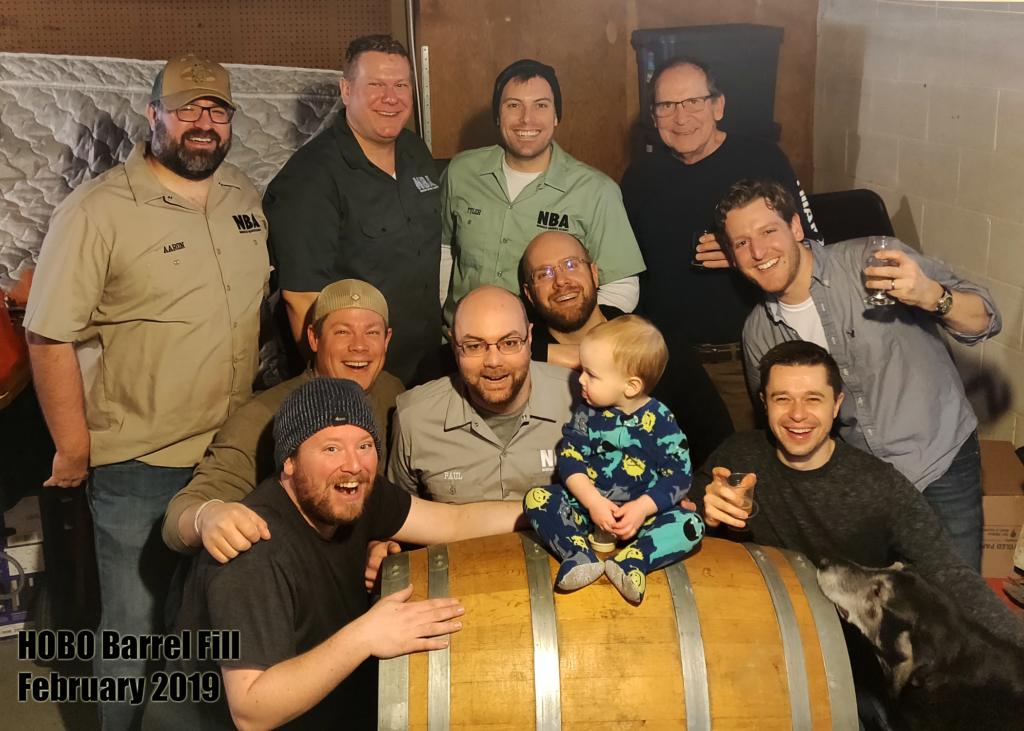
Barrels #2, #3a, #3b, and #4: French Oak – Lambic and Flanders
The two Lambic-style barrels started their lives with clean beer — Scottish Wee Heavy, Belgian Dark Strong, and Saison — before being turned sour. Although we do not have a club koelschip (yet?), the recipes in these use a bunch of raw wheat and have plenty of Lambic-style bugs from our batches with mixed-culture fermentations and from the dregs of this style beer.
The two Flanders-style barrels were added to the mix specifically for this style of beer and have been sour from the start. These barrels were each recently replaced as their predecessors turned acetic (vinegar) and the batches were spoiled. The new Silver Oak Cellars Cabernet barrels are being filled again and will take a little time to catch up with producing beers again.
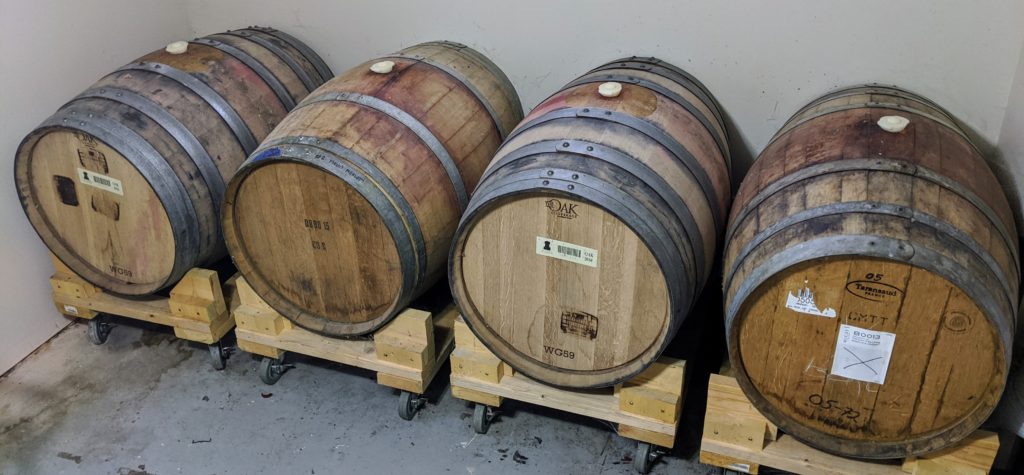
Barrel #5: Buffalo Trace
This barrel has been through a few batches — Russian Imperial Stout, Barleywine, Oatmeal Stout, and Dark Strong — before being put on the shelf temporarily, filled with acid wash to keep the barrel stable until the next step.
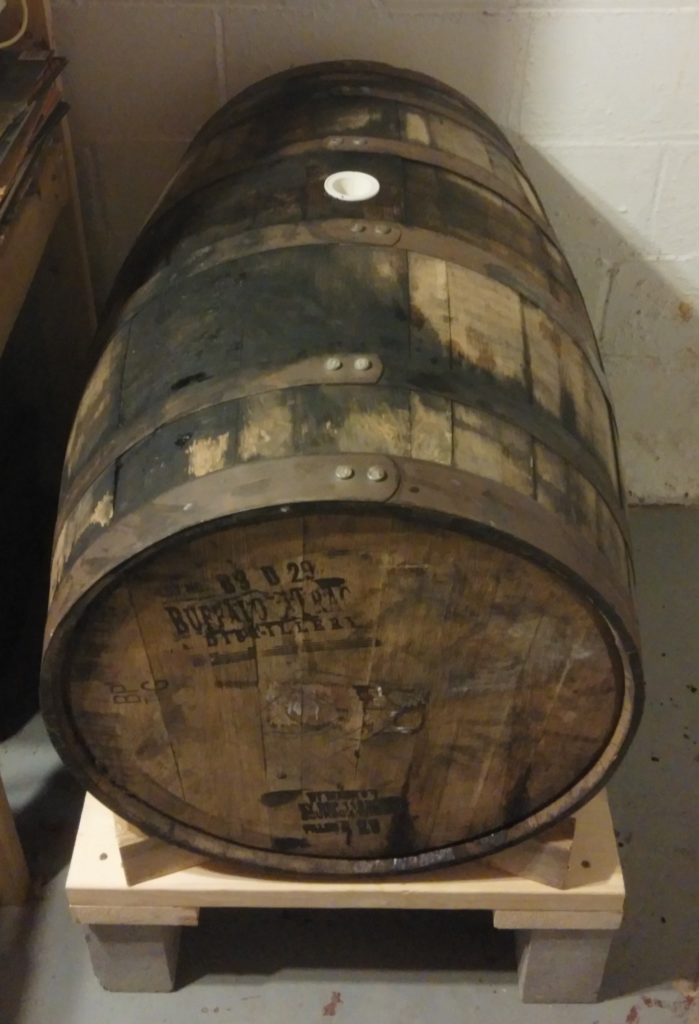
Barrel #6: George Dickel
Starting out its NBA tenure as many barrels do, this Dickel barrel was filled with Russian Imperial Stout followed by Foreign Export Stout and Barleywine. Finding a bit of Brettanomyces in that Barleywine, we turned the barrel sour, but kept it unique to our collection. With a dark sour — and Oud Bruin of sorts — coming out in late 2020 and tasting excellent, this will be a special barrel to keep running with this new recipe.
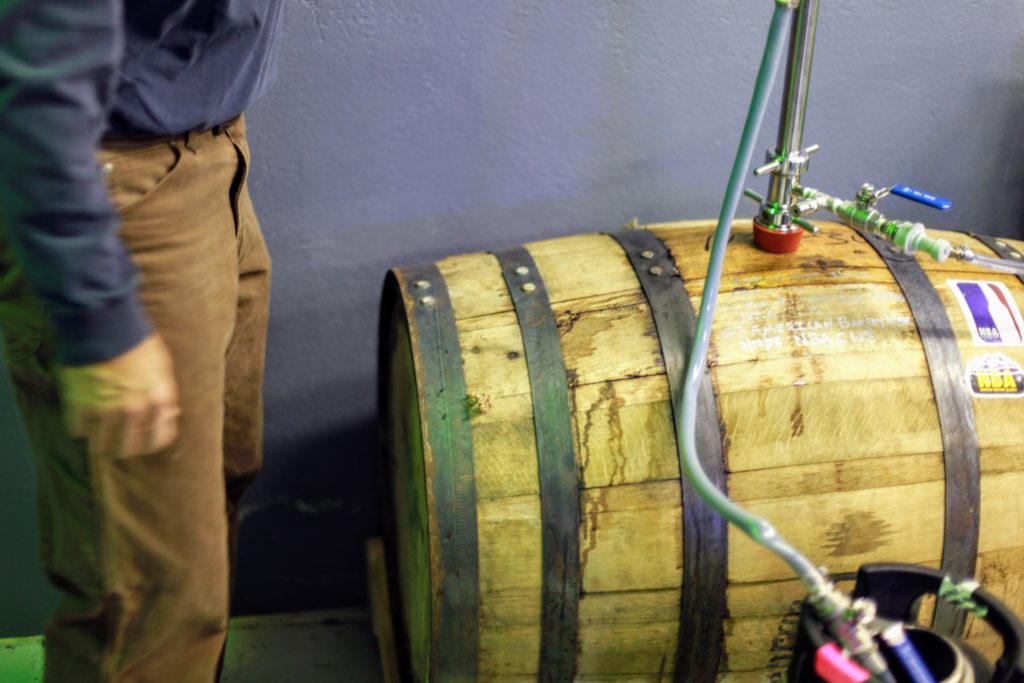
Barrel #7 and #8: Four Roses
Although from the same Bourbon distillery, they are from different whiskey recipes. Once adopted into the NBA program, they each earned a unique personality. The first beer was a huge 1.140 OG and the beers were split by how close they were able to get to that level. This created two quite different beers. Next, they were split between English Barleywine and American Barleywine. As of this writing when they are ready to come out, those are both excellent and unique. The split will follow even further with the next Belgian Quad (aka Dark Strong) and Scottish Wee Heavy taking the next fills.
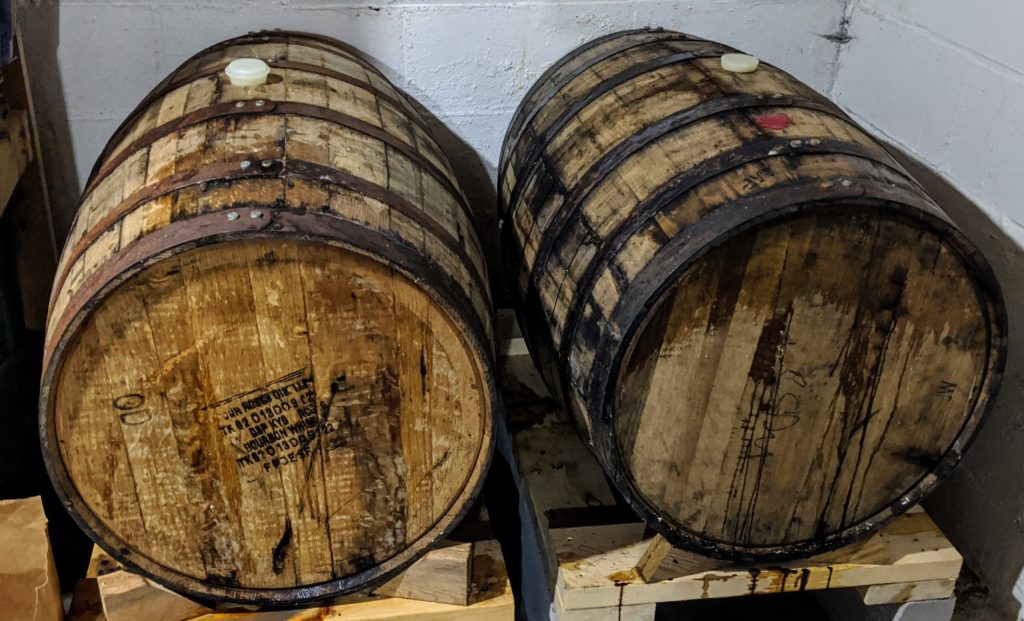
Barrel #9: La Crema – Solera
Added to the program the same time as the Flanders barrels replacements in early 2020, this barrel started at La Crema with a Chardonnay. The initial fill is about one-third turbid-mash beer, one-third single-infusion standard beer, and one-third Roeselare and Wyeast Lambic Blend mixed-fermentation beer — along with a bunch of dregs from great commercial beers with Lambic bugs, Brettanomyces funk, and premium sour flavors. Like the other sour barrels, this should take around 18 months to get sour. This is also a variety on the Belgian Blonde or Lambic-style base beer.
The difference with a solera is that only one-third to one-half of the finished sour beer is removed at a time. When topped-up again, calculations show that the beer should be finished and sour again in another six months. One-third the volume at three times the rate.
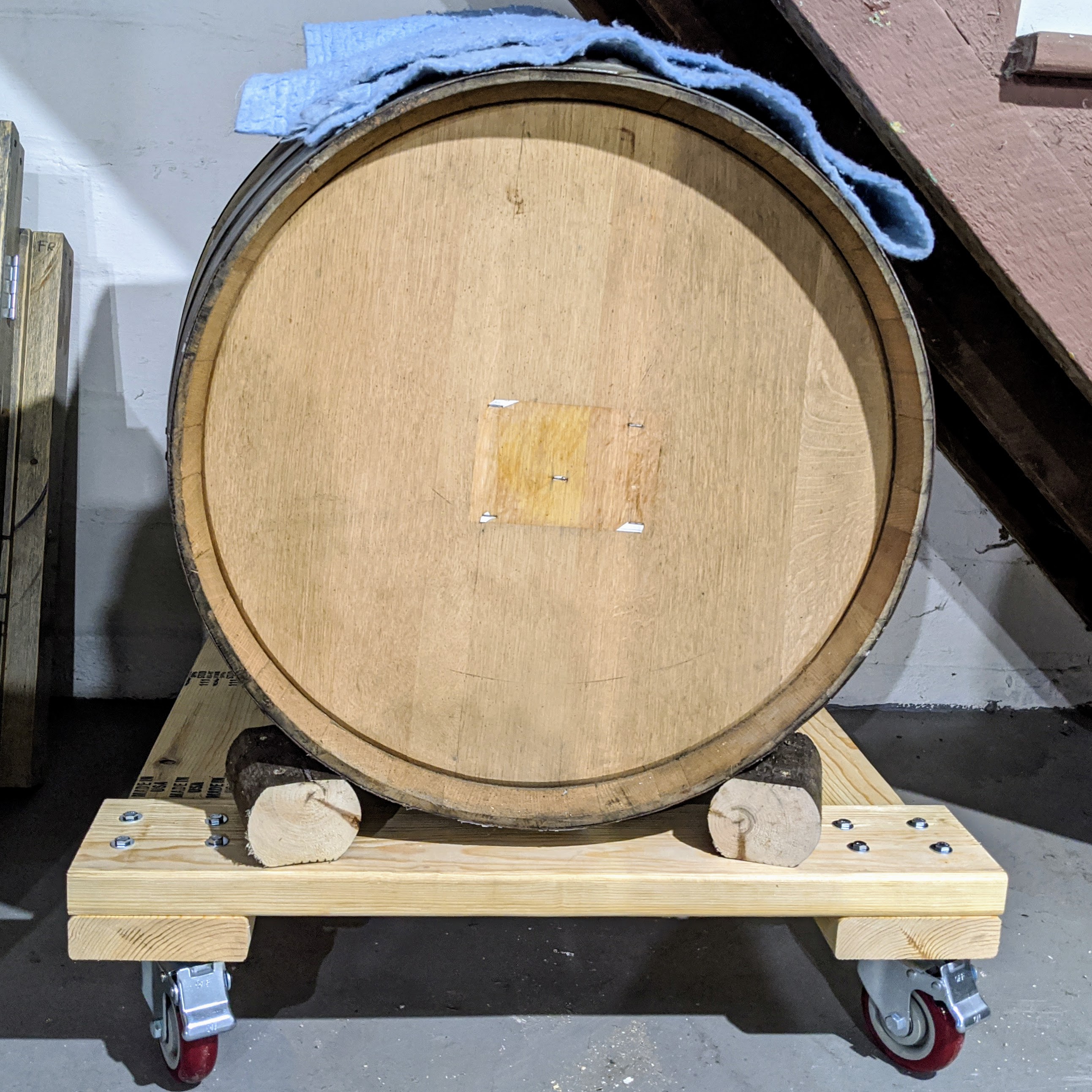
Barrel Program Timeline
Below is a snapshot of the barrel program over time for each fill.
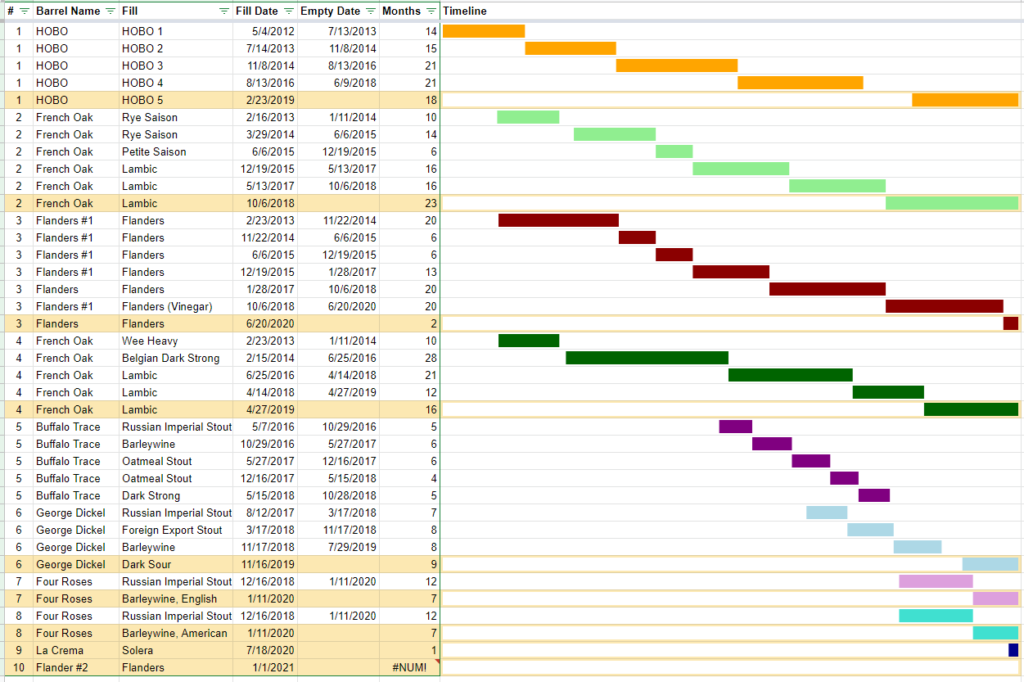
All active club members are eligible to be part of the barrel program. The Solera beers, once ready to drink, will go out to all active members and is filled by ExComm as a club-funded project.
As the beers mature, the Barrel Committee samples them quarterly and tends to the barrel upkeep (watching for blowoff, topping up to keep air/oxygen out of the barrel) and considers when a barrel is reaching the next phase of life to turn sour or be replaced.